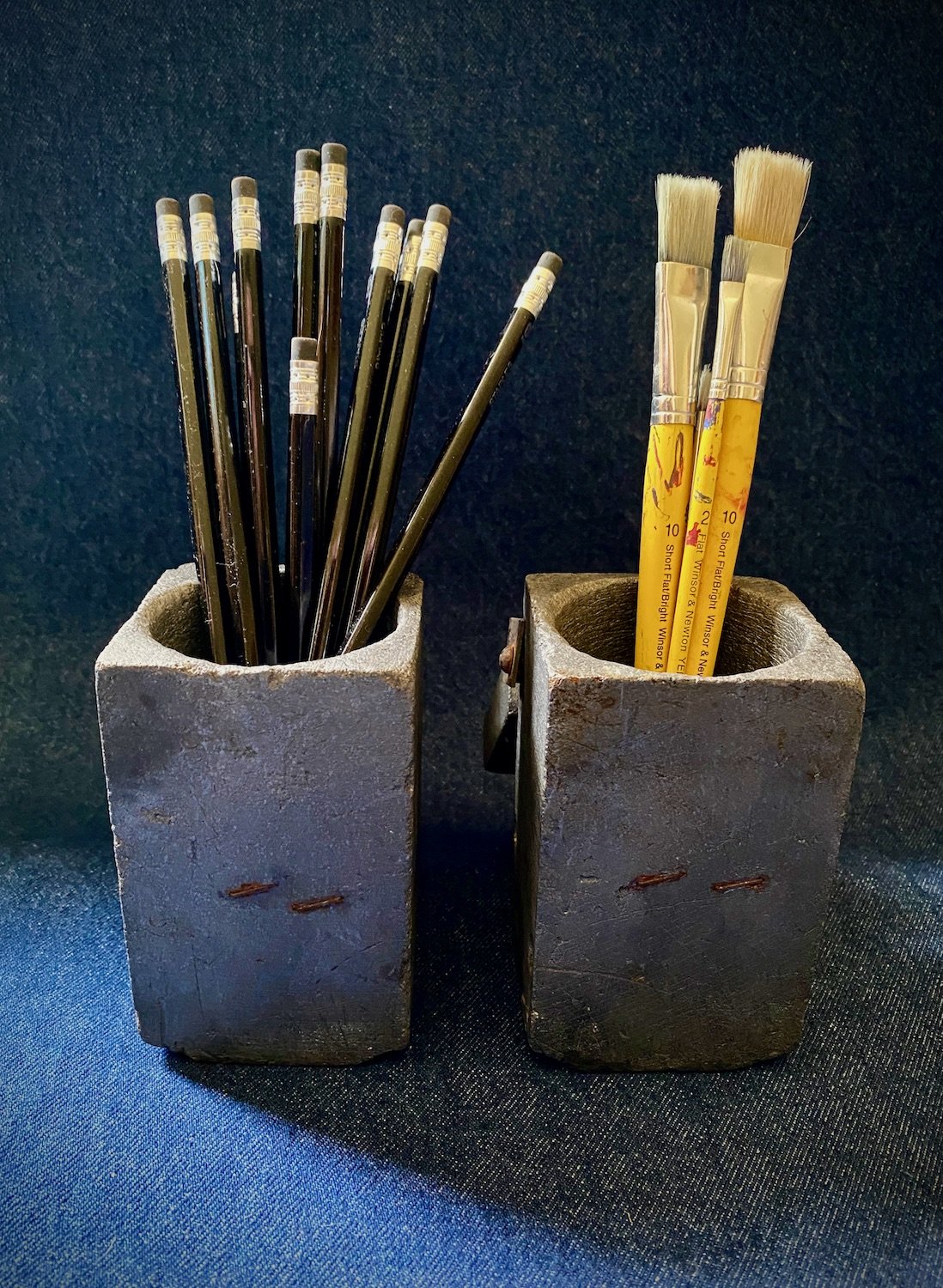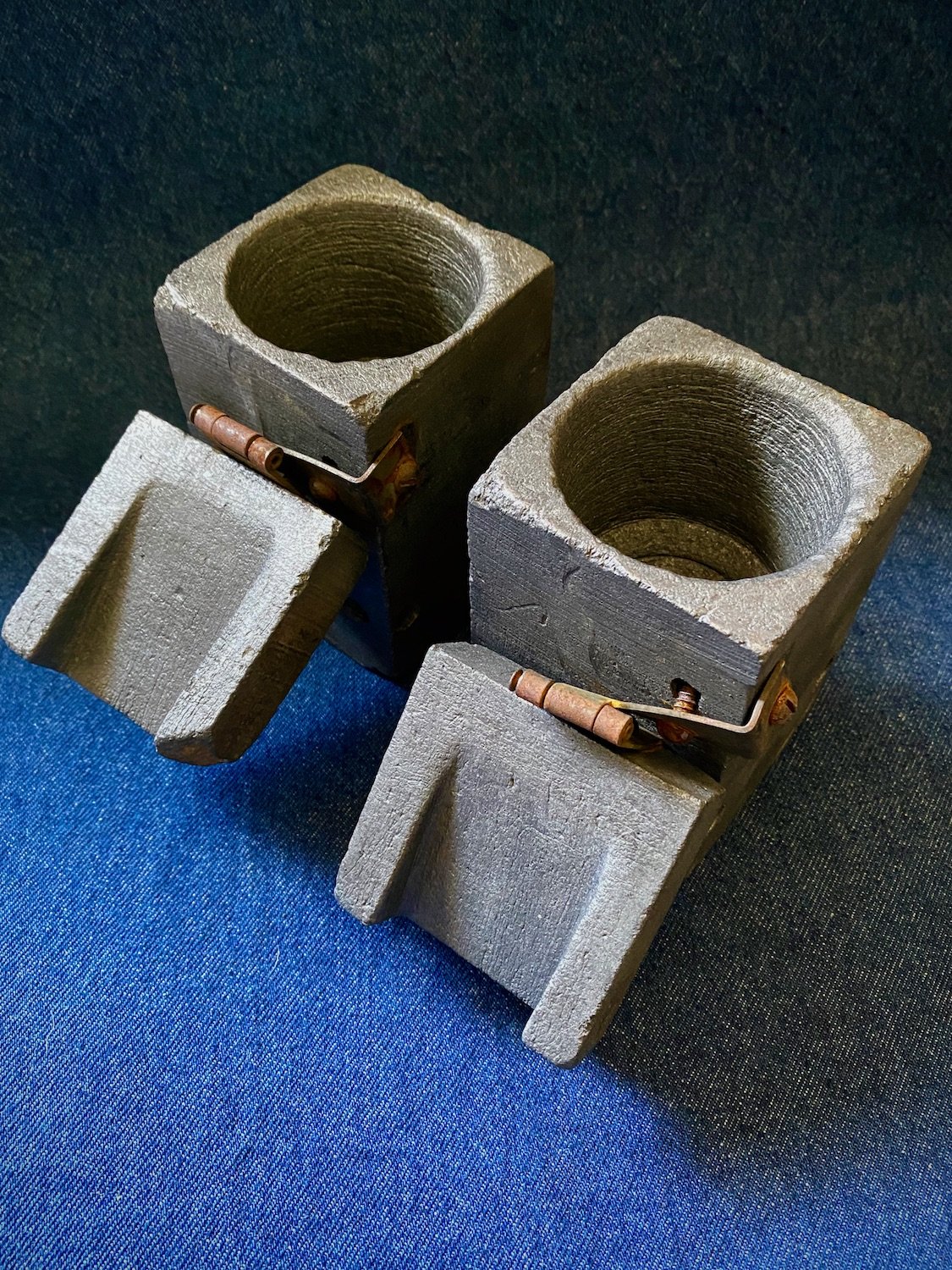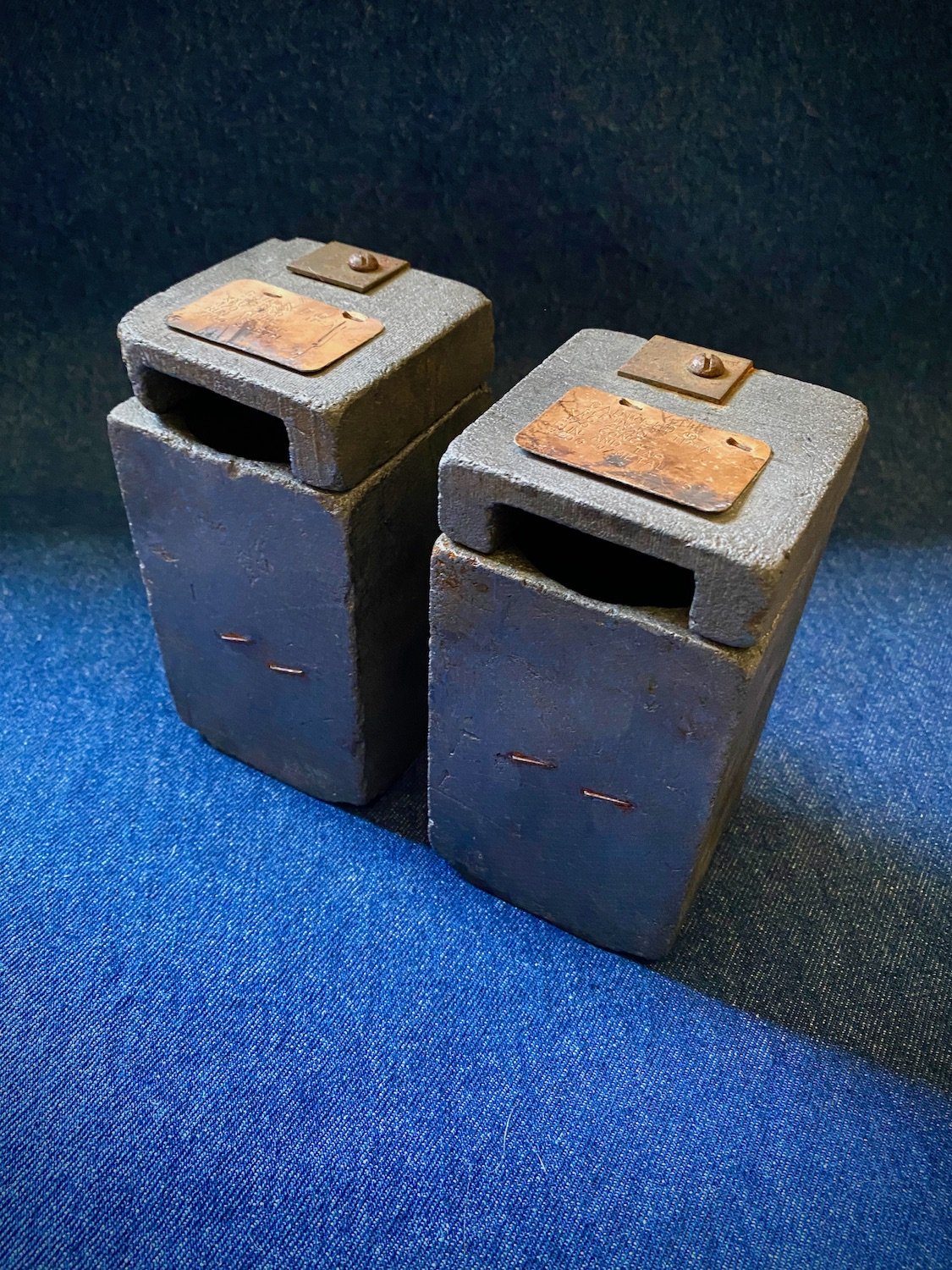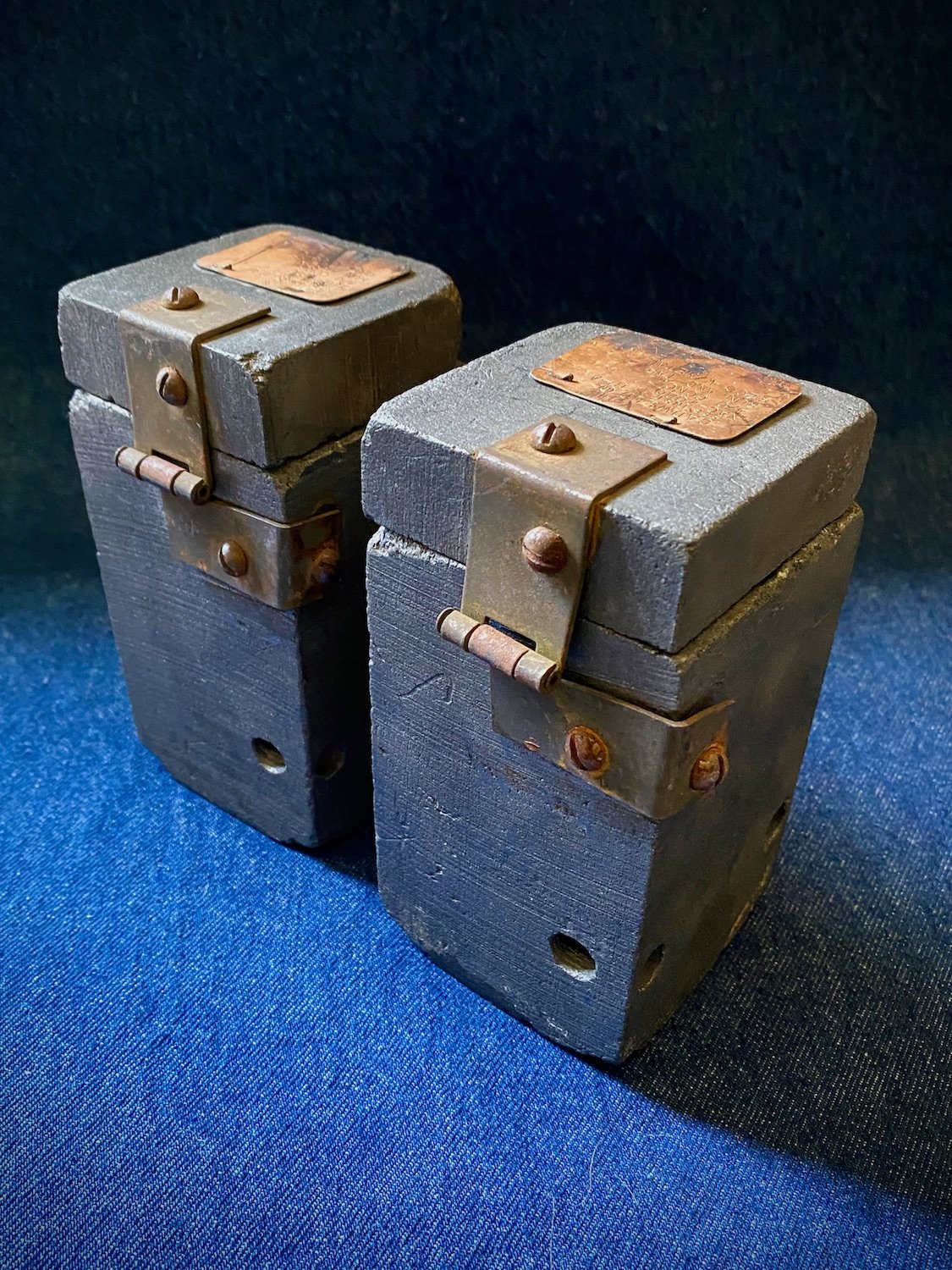 Image 1 of 5
Image 1 of 5

 Image 2 of 5
Image 2 of 5

 Image 3 of 5
Image 3 of 5

 Image 4 of 5
Image 4 of 5

 Image 5 of 5
Image 5 of 5






Thermite Crucibles
A pair of graphite crucibles (or “molds”) used for exothermic welding. In this process, various metal oxides are mixed with aluminum dust to form a highly reactive mixture called thermite. The resulting reaction creates a bolus of extremely hot molten metal, which drops through the bottom of the mold onto the metal to be welded. There is no need for any electrical current or external heat source (aside from an ignition spark). Iron oxide thermite is used most commonly, for welding things like railroad rails and reinforcing steel. These molds, however, were likely used for creating electric connections using copper thermite.
In their retirement, these crucibles make funky little boxes, or vessels. The lids can be easily removed if you wish. We think it’s clever to put pencils in them (graphite!), but you could also plant a cactus, use them to hold a candle — or whatever else you can imagine!
6” tall x 3” wide each.
A pair of graphite crucibles (or “molds”) used for exothermic welding. In this process, various metal oxides are mixed with aluminum dust to form a highly reactive mixture called thermite. The resulting reaction creates a bolus of extremely hot molten metal, which drops through the bottom of the mold onto the metal to be welded. There is no need for any electrical current or external heat source (aside from an ignition spark). Iron oxide thermite is used most commonly, for welding things like railroad rails and reinforcing steel. These molds, however, were likely used for creating electric connections using copper thermite.
In their retirement, these crucibles make funky little boxes, or vessels. The lids can be easily removed if you wish. We think it’s clever to put pencils in them (graphite!), but you could also plant a cactus, use them to hold a candle — or whatever else you can imagine!
6” tall x 3” wide each.